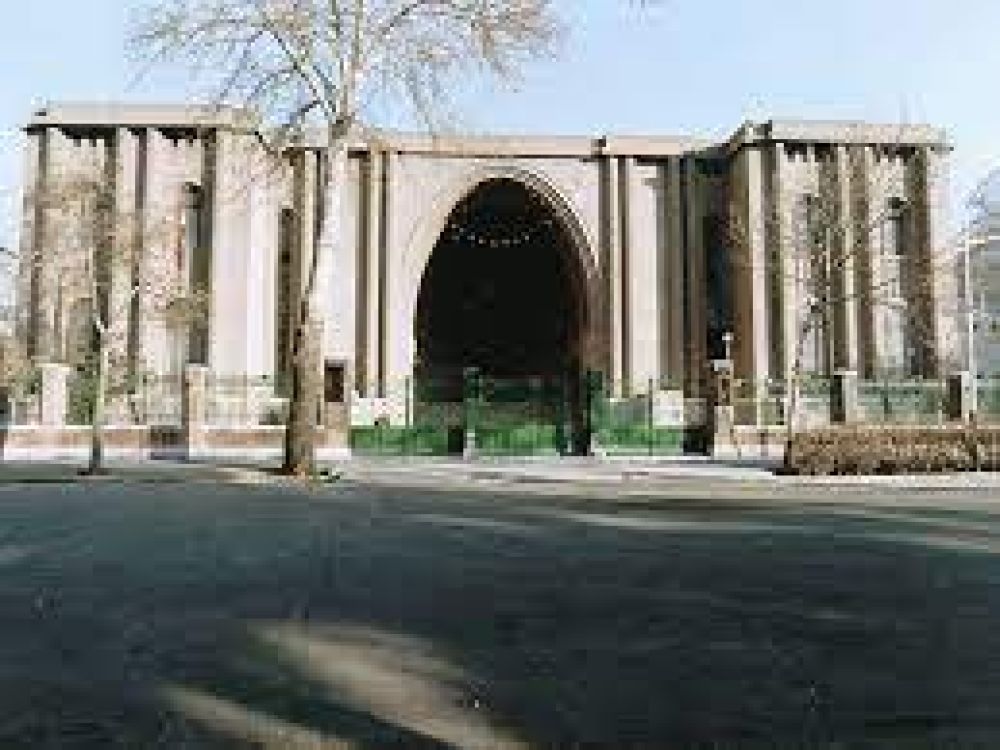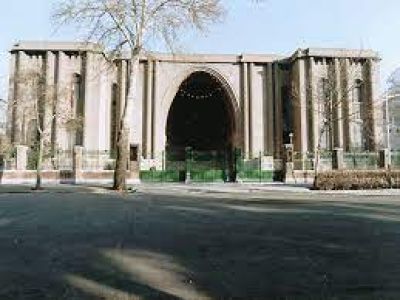

The Prehistoric Iran Exhibition showcases artifacts from the Paleolithic, Neolithic, Chalcolithic, and early Bronze Ages, providing visitors with a comprehensive view of ancient human life on the Iranian plateau. The collection includes pottery, stone tools, and metalwork that tell the story of human evolution and cultural development in this region. As one of the most informative sections in the National Museum of Iran, this exhibition takes visitors on a journey through time, illustrating the transition from nomadic lifestyles to the formation of sedentary agricultural societies. The exhibition offers an unparalleled chance to understand the lifestyles of prehistoric communities, their survival skills, art, and their interactions with the environment.
The Ancient Iran Exhibition is dedicated to the civilization of Persia from the 4th millennium BCE until the Islamic conquest in the 7th century CE. It includes a rich collection of historical pieces, such as cuneiform clay tablets, rhytons, Achaemenid statues, and Sassanian reliefs. Artifacts in this exhibit help tell the story of the empires that shaped the nation's history, such as the Elamites, the Achaemenid Empire, the Parthian Empire, and the Sassanian dynasty. The display pieces are instrumental in demonstrating the intricate craftsmanship and artistic capabilities of these ancient cultures, and they offer a glimpse into the religious, social, and political lives of the inhabitants of what is now modern-day Iran.
The Islamic Era Exhibition at the National Museum of Iran covers the rich and diverse history of Islamic art and architecture in Iran, spanning from the 7th century to the modern era. Key highlights include collections of intricate ceramics, textile, calligraphy, and manuscripts that reflect the influence of Islam on Persian culture. Visitors can expect to be captivated by the elaborate tile work, the detailed miniatures, and the range of styles that emerged from different regions and periods. The exhibition emphasizes the role of religion in shaping the artistic expression and daily life, as well as showcasing the continuity and change in Persian craftsmanship under Islamic rule.
This activity is not an exhibition but rather a compilation of various experiences within the National Museum of Iran that offer insight into the country's history following the Islamic Revolution of 1979. Visitors interested in contemporary Iranian history could find museum lectures, presentations, or special temporary exhibits focusing on this era. These activities might examine the impact of the revolution on Iranian society, culture, and politics. Materials could include photographs, documents, and art from the post-revolution period, though it's important to note that the museum's primary focus is on ancient and historical artifacts.
Iran has a rich history of calligraphy, regarded as one of the most esteemed art forms in the Islamic world. This workshop is a hands-on activity where participants of all ages can learn the basics of Persian calligraphy. Under the guidance of an experienced calligrapher, attendees will have the opportunity to practice writing in traditional scripts such as Nasta’liq and Ta'liq. All the necessary materials, including special papers, ink, and 'qalams' (calligraphy pens), are provided. The workshop not only teaches the technical skills but also offers insight into the artistic and cultural significance of calligraphy in Persian history.
The Museum Educational Tour is an engaging activity catered to students and history enthusiasts looking to delve deeper into the cultural heritage of Iran. Led by knowledgeable museum educators, this guided tour provides a more in-depth understanding of the various exhibits, covering prehistoric times up to the Islamic era. Participants will benefit from the engaging storytelling and background information that illuminate the significance of the artifacts on display. The experience is designed to be interactive, often encouraging questions and discussions amongst the group, making it both educational and enriching.
The National Museum of Iran offers preservation demonstrations to showcase the meticulous work that goes into conserving the country’s historical artifacts. Visitors can observe specialists as they clean, repair, and preserve various items from the museum's vast collection. This behind-the-scenes look gives an appreciation for the effort required to maintain the integrity of these cultural treasures for future generations. It is a rare chance to see conservation techniques in action and to learn about the challenges of keeping history alive.
Temporary exhibitions at the National Museum of Iran offer visitors the chance to see unique artifacts brought from other museums around the world or special collections that are not normally on display. These exhibits are often curated around specific themes, such as the Silk Road, regional archaeology, or the influence of Persian culture on other civilizations. Each temporary exhibition provides an exclusive opportunity to engage with rare historical works and gain new perspectives on Iranian heritage and its global connections.
Regular lecture series are conducted by historians, archaeologists, and art experts at the National Museum of Iran, focusing on various aspects of Persian art and culture. These educational sessions provide depth on topics like ancient Persian empires, coinage, the development of religious and political systems, and the influence of neighboring civilizations. The lectures are designed for those who wish to immeran immersion into specific historical narratives or understand the intricate details behind the museum's artworks.
The National Museum of Iran recognizes the importance of engaging the younger generation with heritage and history. As such, they offer various programs tailored for children. These initiatives may include interactive tours, hands-on arts and crafts activities inspired by the museum's collection, and engaging storytelling sessions. Programs are designed to make learning fun and accessible, providing an age-appropriate insight into the country's past and fostering a sense of curiosity and wonder about the ancient world.
